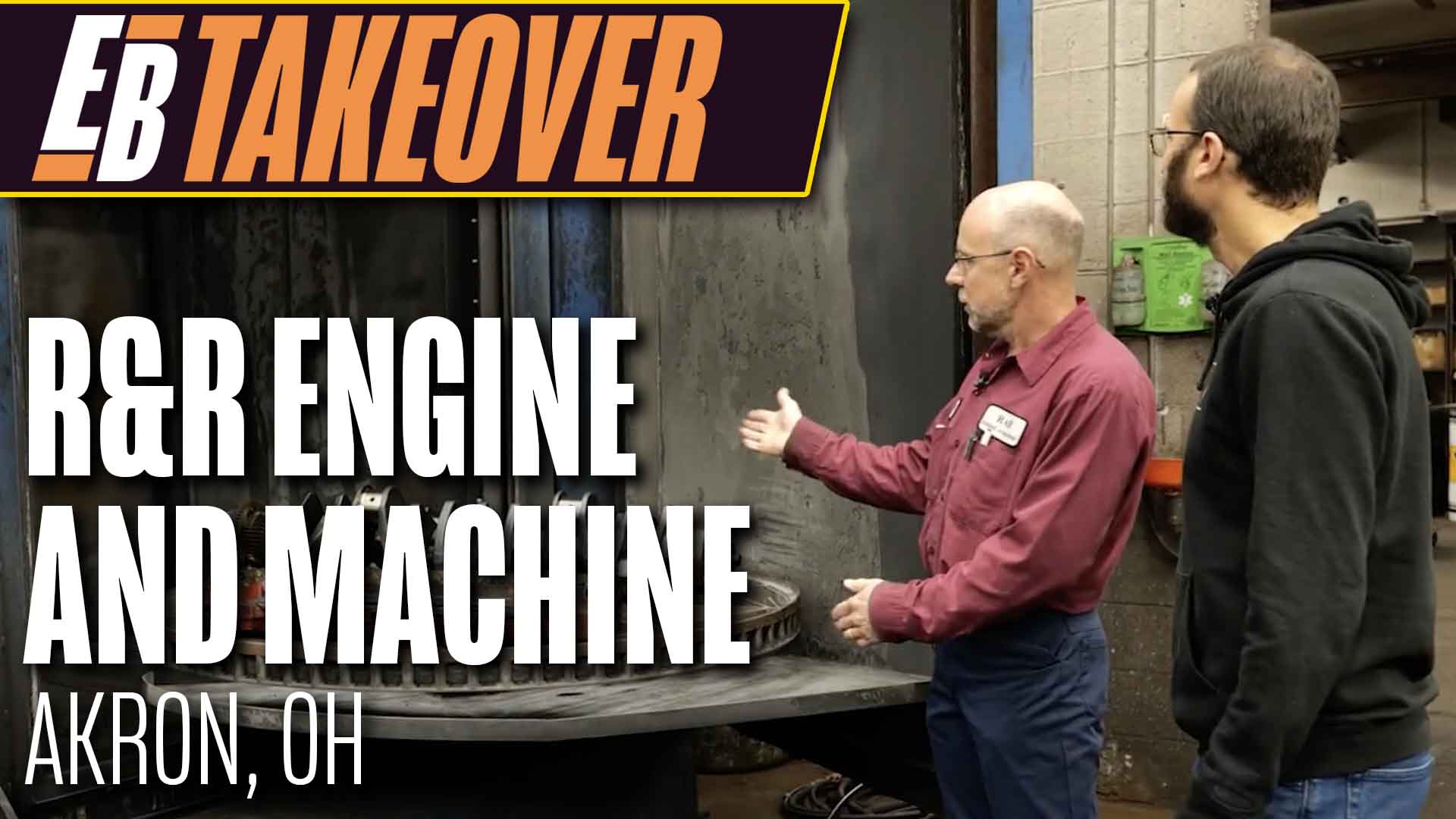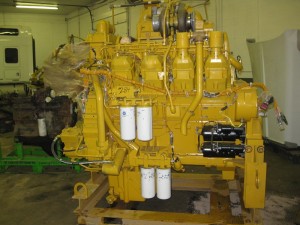
particular one goes in a 990 Rock Truck.
It’s no secret that the engine building profession is tougher today than in years past. In many instances, no longer can any one specific aspect of engine rebuilding support a full business anymore. So, what are today’s engine builders supposed to do? As someone once said, cast your line where the fish live. Look for where there is opportunity.
Engine builders today are diversifying their businesses in order to maintain a healthy, steady stream of business and cash flow. One such area of opportunity lies within the industrial engine market. Industrial engines are a broad category that essentially covers any off road engine, typically found in generators, forklifts, excavators, backhoes, cement cutters, wood chippers, and the list goes on.
Now, you can’t necessarily expect to make an immediate leap into rebuilding industrial engines, but it should absolutely be a consideration if you’re looking to diversify. Engine Builder magazine recently spoke with several companies already taking advantage of this mostly untapped market to understand where the opportunity is and what it takes to win.
Industrial Market Overview
While other engine rebuilding markets have been on the decline over the years, industrial engine work has remained steady for some and has been growing for others, leaving a lot of upside for engine builders to get involved.
“Overall, the industrial market is tremendous,” says Bryan Menke, president of R&R Engine and Machine, Akron, Ohio, which specializes in engine rebuilding and machining for industrial, diesel, automotive, and marine engine applications. “There is so much opportunity even though the engines are designed to last longer and are more powerful. Everyone can take advantage of the industrial market around them – if they’re not into it yet it’s a market they are missing.”
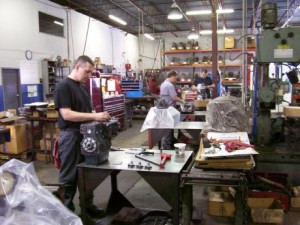 Today, the industrial market has swayed toward more diesel engines than gasoline, and has showed growth particularly in the under 50 hp segment as more and more smaller equipment is developed and introduced to the marketplace.
Today, the industrial market has swayed toward more diesel engines than gasoline, and has showed growth particularly in the under 50 hp segment as more and more smaller equipment is developed and introduced to the marketplace.
Industrial engine manufacturers include companies such as Kubota, Perkins, Isuzu, Deutz, Caterpillar, Waukesha, Ford Industrial, Yanmar, Continental and more.
“We cover all applications, and you have to be that way,” Menke says. “You have to be able to supply and service everything that’s out there.”
Industrial Engine Applications
Industrial engines are not simply standalone engines you run in a power generator. These engines can be used in a large variety of applications, which again, provides greater upside for engine builders looking for growth opportunities.
“Engines fitted to off road industrial equipment, sometimes in stationary applications such as generators, and also engines used in concrete
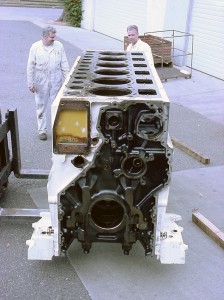
saws, wood chippers, forklifts, airport tugs, etc. are called ‘industrial engines,’ although some are less ‘industrial’ than others,” says Jay Foley, president and CEO, Foley Marine & Industrial Engines, Worchester, Mass., a 100-year-old industrial engine distributor.
Foley classifies his industrial makrete as everything from forklifts to power generation, construction equipment, and pressure washers, military and agricultural applications. An industrial engine is generally an off-highway application.
“Some industrial engines, mostly forklift applications, have a few similarities to automotive applications,” says Jaime Morche of RoadBuilders Industrial Machining, a Kansas City, Kan., machine shop specializing in diesel, heavy duty, agriculture, and industrial engine machining and rebuilding. “The heads and blocks particularly can resemble common automotive applications, but most of the time there are also very important differences and cannot simply be interchanged.”
The folks at R&R Engine and Machine agree that a large part of industrial engines are used in off-highway applications.
“For us, a majority of our industrial business has to do with off-road machinery such as cranes, backhoes, loaders with Cummins and Perkins engines,” Menke says. “We’re also doing a lot of work with wood chippers, which are all diesel now. We do a lot of work on small machinery like Bobcats, loaders, mini excavators, and even power wheelbarrows.
“We see a lot of Deutz, which go in Ditch Witches and other underground construction equipment like that,” he says. “Yanmar is also coming on pretty strong in the industrial category.”
Maintenance Issues
Every industrial application comes with a maintenance schedule much like an automotive vehicle. Unlike many automotive customers, however, your industrial customers are likely to follow those strict maintenance schedules to ensure potential problems are caught before they happen.
“Industrial customers often have their same equipment for many years,” Morche says. “Proper maintenance can ensure hours of trouble free operation or show the early signs of unexpected problems such as in oil samples or filter changes.”
Many of the off-highway industrial engines are common rail engines and fuel systems and the fuel and filters have to be super clean.
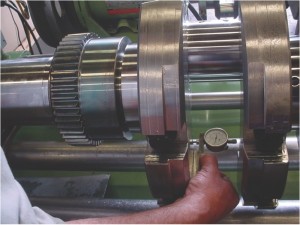
“We see a lot of injector failures and pump failures due to contamination,” Menke says. “Other than that, each specific failure is related to that engine. I’m sure CAT has a weakness here and Cummins has something weak, so it varies per manufacturer. Turbochargers are becoming a bigger issue. They have wastegates on them that get sticky or stuck or rust and fall off. Major component failure will depend on the hours and maintenance on them.”
Equipment that is typically exposed to harsh environments with dust and foreign debris in the air such as concrete cutters and wood chippers could require more service than other applications.
“Sometimes the preventive maintenance on those machines isn’t the greatest,” Menke acknowledges. “Changing air filters and oil on those machines aren’t done enough. I would certainly look at harsh environment engines, especially in the rental market. People rent these machines and use them pretty heavily and that’s pretty hard on them.”
In the end, the maintenance schedule will depend upon the application.
“Maintenance could be required in as few as 700 hours,” Foley says. “An example is the Deutz 1011/2011 diesels, which use a timing belt, not timing gears. When the belt breaks, which it will, expensive noises will happen as the pistons hit the valves. We recommend that the belt and tensioner pulley be changed every 700-1,000 hours to avoid a catastrophic failure.”
From Automotive to Industrial
The major components in all these engines are the same as those in on-road engines. They all have similar sensors and wiring. Industrial engines could have higher horsepower ratings and different governors on them than lighter duty engines to help hold them steady. But for the most part they are the same.
“A guy who is used to working on a Dodge with a Cummins in it would have an easier time switching over to an industrial engine than a guy who works on gasoline 4 or 6-cylinder or V8 engine, since there aren’t many industrial engines running on gasoline like that,” Menke says. “Cummins engines are fairly easy to start off with. When you start getting into the Deutz or Yanmar they have different pump systems, different timing and you need different tooling for flow timing or checking the injector started delivery. There are definitely difficult engines versus easy engines, and Cummins would be one of the easier ones.”
Despite a learning curve for some engine builders looking to diversify into industrial engines, the key is to gain access to the information you need to be successful with it.
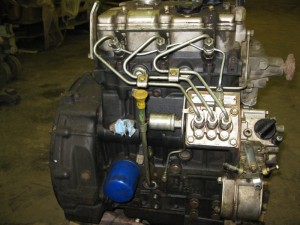
“As long as they have the information – the specs, clearances and torques – the main thing is troubleshooting, and the laptops and the programs to read those engine’s codes to find out what they are doing,” Menke says. “A good gasoline automotive mechanic should be able to pick up the industrial and diesel market fairly easily.”
According to Foley, many of the original industrial engines were passenger car gas engines such as the Ford 300 or the Chrysler 318 that were given an industrial designation such as CSG649 for the Ford 300 and LH318 for the Chrysler. Then they were adapted to industrial applications with the addition of a governor, timing gears and sometimes a different fuel system.
“More and more industrial engines, particularly the diesels, are true industrial engines configured for a specific purpose with hardened timing gears, center sump oil pans, electronic governors, turbo chargers, etc.,” Foley says. “They are built to the customer’s specification that is determined by the requirements of the machine the engine is going to be powering.”
The biggest mistake a shop can make is to assume that the parts for a particular engine are all the same and to order parts based simply on the model number, disregarding the engine serial number or specification number.
“Industrial engines are not all the same,” Foley says. “A shop that thinks, for example, that all the internal parts for a Perkins 4236 diesel are the same is going to be in for an expensive surprise.”
The second biggest mistake an inexperienced shop can make is to assume that because an engine looks like a passenger car engine, it is one.
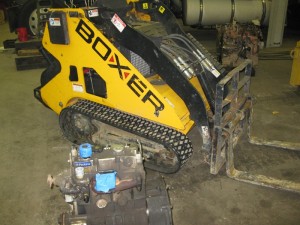
“The Ford KSG416 industrial engine is often called a Pinto engine by Bobcat skid steer owners,” he says. “Yet, about the only thing it shares in common with that passenger car engine is that it is an in-line four cylinder. The only people who make any money when parts are improperly ordered and get shipped back and forth is UPS.”
While there are plenty of differences between automotive and industrial engines, there are similarities to keep in mind as well.
“There are several light-duty industrial engines that the automotive machine shop could handle,” Morche says. “They are machined the same way – any dry sleeve block can be bored to the next (available) oversize and cam bearings are installed the same as automotive.”
There are many special parts and engine configurations to deal with when deciding to venture outside of the automotive side of engine building.
“The knowledge needed for each application will be time consuming and extremely necessary,” Morche says. “AERA’s PROSIS PRO can help, but the purchase of an application specific OE manual would be a wise investment. With extensive technical research will come the inevitability of running into parts availability challenges. So the bottom line is, do your homework but don’t be afraid to try something new.”
Put Your Shop in Play
Once you’ve made the decision to diversify your engine business into the industrial market and have learned how to repair some of these kinds of engines, you have to make sure people know they can come to you for that work.
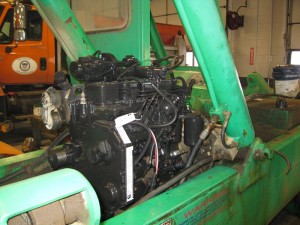
“You should prepare a well thought out, long-range marketing plan to put yourself and your company in front of industrial engine users such as lumber yards, generator set service companies, construction houses, landscapers, etc.,” Foley says. “You should build relationships with engine companies already in this field who can help with tech manuals, specs and parts.”
R&R Engine and Machine agrees that marketing your business is the key to gaining new business in industrial engines.
“There is a gamut of different engines that could be worked on or serviced by either machine shops or engine builders to broaden their portfolio,” Menke says. “You have to make a marketing call and get out there and let you’re name be known so the customer knows where to go for service or service parts. Who is their first call going to be? Is it going to be back to the dealership all the time, or do they think filter or turbo and call an ADS (Association of Diesel Specialists) shop or AERA shop first?”
In addition to marketing efforts, the engine rebuilder seeking to get into this market needs to make a commitment in terms of equipment, customer service, technical knowledge, and working capital.
“Just as we may dabble in the automotive engine side of things, those guys should have the ability to dabble in the industrial world,” Morche says. “In the end, flat surfaces have to be flat, and round holes have to be round. Application specific research is just as important as having the right tools for the job.” n













